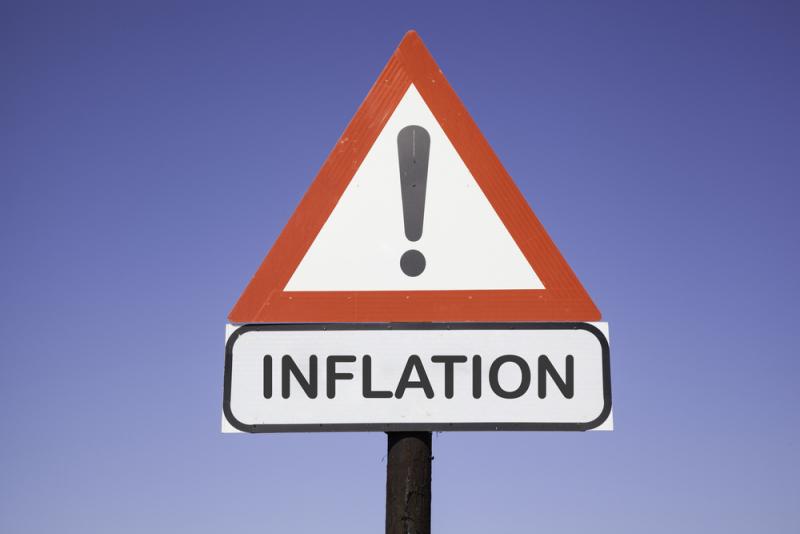
Ever heard childhood stories from your parents or grandparents, talking about how they could visit the local Milk Bar and purchase a big bag of lollies for a couple of cents? I know I have heard it time and time again. While this is a very common story, it discusses a very interesting economic phenomenon that affects households and businesses every day. The few cents that could buy a bag of lollies during our grandparents’ generation, cannot purchase anything in today’s economy. The same bag of lollies will now have to be purchased at much higher prices. This phenomenon is called inflation.
Inflation refers to the sustained increase in the prices of goods and services from year to year, resulting in the decline in purchasing power of a country’s currency.
Some of the root causes of inflation could be:
Excessive inflation can have varying effects on households and businesses such as a decrease in purchasing power, to what some economists would argue, an inefficiency in the money value system.
In the past 100 years, there have been severe cases of hyperinflation, meaning rapid increases in the prices of goods and services. One of the most prominent cases being in Zimbabwe, where at its peak in 2008, prices were doubling almost every 24 hours. Zimbabwe’s currency became so worthless, that in 2009, it was no longer in circulation. Instead, the country’s people opted to use a multitude of currencies, such as the South African Rand, USD, and the Euro.
Luckily, Australia hasn’t had such severe cases of inflation, where over the last 10 years, we have been able to achieve our target rate of 2-3% per annum.
Although it may vary around the world, most countries use the CPI (Consumer Price Index), including Australia, as the main indicator of inflation levels. The CPI measures inflation by constructing a basket of around 100,000 goods and services that are weighted according to their importance to the metropolitan household.
Whilst the CPI does act as a relatively good indicator of inflation, it does have its limitations. As this ‘basket’ of goods and services is essentially fixed, it may over-exaggerate the increase in the price level, as it doesn’t account for the technological improvements in certain goods and services. For example, whilst smartphones are much more expensive than what mobile phones used to cost over 10 years ago, their functions go beyond just being a form of communication. Smartphones can be a gaming platform, business tool, or even simply an electronic encyclopedia, with their ease of access to search engines such as Google.
However, when analysing price changes, Central banks are not limited to simply one measure of inflation in the economy. Central Banks may also use the Core Inflation measurement, as an indicator of underlying price trends in the economy. Core inflation aims to take out the ‘one-off’ price shocks to the economy, which may either over-exaggerate or underwhelm price changes.
For example, when Cyclone Yasi hit Queensland in 2011, a lot of banana crops were destroyed, very noticeably decreasing the supply of banana’s, coinciding with a significant increase in prices to around $3 a banana. Whilst this price shock may hay have most likely coincided with slight increases in Headline Inflationary figures, there would be no change in Core Inflation, as it eliminates those ‘one-off’ price shocks that may lead economists and analysts astray.
Therefore, when measuring the levels of inflation in the economy, central banks, economists and analysts alike utilise several measurements of price changes in the economy, in order to fully understand the bigger picture.
Inflation has an interchangeable link with the prime indicator of economic growth within a country, GDP (Gross Domestic Product). Within the ‘boom’ phase of the business cycle, where actual GDP is exceeding potential GDP, inflation is usually above the target rate. Likewise, during the ‘trough’, or recessionary stage of the business cycle, where actual GDP is below potential GDP, the inflation rate would usually be below the target rate. As was the case with the US economy during the GFC, wherein 2009, GDP growth and inflation were both negative.
GDP also acts as an indicator of society’s living standards (with many limitations). However, growth in inflation can also over-exaggerate GDP, and thus living standards. For example, Nominal GDP is the final value of all goods and services produced in an economy over a given period, at current market prices. If hypothetically in one year, inflation was quite above target, this would over-exaggerate the growth in Nominal GDP. However, this is not reflective of the society’s current living standards.
That’s why in analysing economic growth, analysts and economists alike prefer to use Real GDP, which provides a relatively accurate picture of a country’s economic growth after removing the effects of inflation.
The link between inflation and stock returns has often been discussed, with a multitude of results. In times of higher rates of inflation, corporate profits in some sectors may be lower, as inputs are higher, which in the short term, would further worry consumers. However, higher rates of inflation could possibly benefit some firms producing goods and services that have relatively inelastic demand, as consumers are not very reactive to price changes in certain goods and services.
Although, a study conducted on the US S&P 500 showed that, generally stock returns were higher when inflation is stable, with higher inflation coinciding with increased stock market volatility.
Economists often argue and debate about whether inflation can be controlled, or should be left alone, in order to correct itself. However, since the GFC, central banks are making collective efforts in reaching their respective inflation goal.
This can be particularly seen through most developed economies’ central banks, such as the ECB (European Central Bank) and the BOJ (Bank of Japan), where they have adopted very accommodative monetary policy stances. Recently Japan succumbed to Negative Interest Rates, in order to avoid a rapid decrease in the prices of goods and services in an economy, otherwise known as deflation.